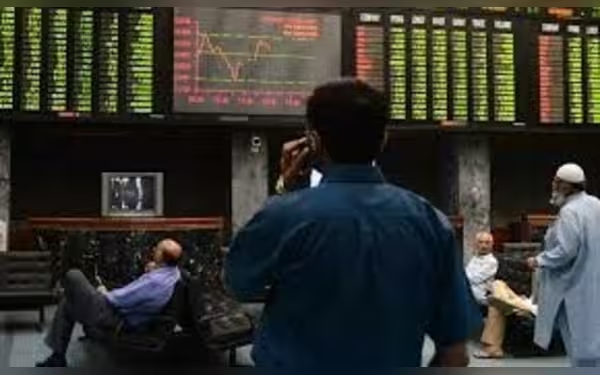Saturday, November 16, 2024 05:32 PM
PSX Weekly Decline Despite Record Index High
- PSX ends week at 85,250 points, down 0.27%.
- Political unrest and trade deficit impact market.
- Foreign selling continues, totaling $11.6 million.
 Image Credits: dawn
Image Credits: dawnThe PSX faced a decline this week, closing at 85,250 points despite earlier gains, influenced by political unrest and economic challenges.
KARACHI: The Pakistan Stock Exchange (PSX) experienced a challenging week, concluding with a slight decline despite reaching an all-time high earlier in the week. The market's performance was influenced by various factors, including political tensions and economic developments.
During the first trading session, the market faced losses primarily due to rising political unrest, particularly with the Pakistan Tehreek-e-Insaf (PTI) party calling for protests. However, the atmosphere shifted positively following the successful conclusion of the 26th Shanghai Cooperation Organisation (SCO) summit, which raised hopes for enhanced political and economic stability in the region. This optimism led to a surge in investor confidence, propelling the index above the 86,000 mark on Wednesday.
Further bolstering the market was the government's announcement regarding the release of outstanding payments to five independent power producers (IPPs) from the 1994 policy. Additionally, the government proposed four “take-and-pay” options to 18 IPPs under the 2002 power generation policies. These measures were seen as steps towards improving the energy sector and restoring investor faith.
Despite these positive developments, the index struggled to maintain its gains above 86,000 points. According to Arif Habib Ltd (AHL), the market faltered in subsequent sessions, primarily due to a 2.66 percent contraction in the Large-Scale Manufacturing Index (LSMI) output, although there was a sequential recovery of 4.7 percent month-on-month. Moreover, Pakistan's trade deficit widened by 24 percent year-on-year, reaching $1.8 billion in September, which added to the market's concerns.
In the recent Pakistan Investment Bonds (PIB) auction, yields saw a significant drop across all tenors, with the two-year bond experiencing a notable decline of 74 basis points. On a positive note, the State Bank of Pakistan reported that foreign exchange reserves crossed the $11 billion mark, the highest level in nearly three years, with an addition of $215 million during the week ending October 11. However, the Pakistani rupee remained stable, inching down by two paise to Rs277.6, as the central bank did not disclose the source of the inflow.
As a result of these mixed signals, the benchmark KSE 100 index settled at 85,250 points, reflecting a loss of 233.3 points or 0.27 percent week-on-week. Sector-wise, commercial banks, power generation, fertiliser, cement, and paper and board sectors contributed negatively to the index. Conversely, the refinery, tobacco, engineering, pharmaceutical, and automobile sectors provided some positive contributions.
On the scrip front, Pakistan Oilfield, Hub Power, MCB Bank, United Bank Ltd, and Engro Corporation were among the significant negative contributors. In contrast, Mari Petroleum Ltd, Attock Refinery Ltd, Pakistan Tobacco Company, Fauji Fertiliser Company, and Indus Motor made positive impacts on the market.
Foreign selling continued, amounting to $11.6 million, compared to a net sell of $22.6 million the previous week. The most significant selling was observed in the 'other sectors' category, followed by fertiliser. On the local front, companies reported buying worth $25.8 million, with mutual funds contributing an additional $7.6 million. The average trading volume dipped by 15.5 percent to 442 million shares, while the average value fell by nearly a quarter to $81 million week-on-week.
Looking ahead, analysts at AKD Securities Ltd suggest that the market may remain positive, supported by declining interest rates, which are expected to channel more investment into equities. Additionally, the ongoing earnings season will keep corporate results in focus. Despite the recent fluctuations, the market is still considered attractively valued, currently trading at a price-to-earnings ratio of 3.7x with a dividend yield of 11.9 percent.
While the PSX faced challenges this week, the underlying factors suggest potential for recovery. Investors should remain vigilant and informed, as the market dynamics continue to evolve amidst political and economic changes. Understanding these trends can help investors make more informed decisions in the ever-changing landscape of the stock market.













